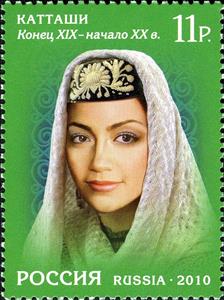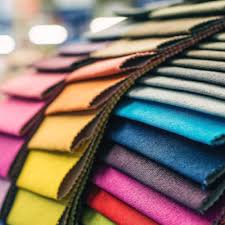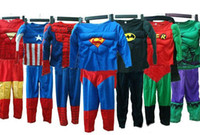Stamp: Headdresses of Tatarstan. Kattashi, XIX-XX c. (Russia 2010)
Headdresses of Tatarstan. Kattashi, XIX-XX c. (Russia 2010)
30 July (Russia ) within release Headdresses goes into circulation Stamp Headdresses of Tatarstan. Kattashi, XIX-XX c. face value 11 Russian ruble
| Stamp Headdresses of Tatarstan. Kattashi, XIX-XX c. in catalogues | |
|---|---|
| Michel: | Mi:RU 1662 |
Stamp is vertical format.
Also in the issue Headdresses:
- Stamp - Headdresses of Tatarstan. Maiden Kalfak, XIX c. face value 11;
- Mini Sheet - Headdresses of Tatarstan. Maiden kalfak, XIX c. face value 121;
- Mini Sheet - Headdresses of Tatarstan face value 88;
- Stamp - Headdresses of Tatarstan. Kattashi, XIX-XX c. face value 11;
- Mini Sheet - Headdresses of Tatarstan. Kattashi, XIX-XX c. face value 121;
- Stamp - Headdresses of Tatarstan. Kamchat burek, XIX c. face value 11;
- Mini Sheet - Headdresses of Tatarstan. Kamchat burek, XIX c. face value 121;
- Mini Sheet - Headdresses of Tatarstan. Skullcap, XIX-XX c. face value 121;
Stamp Headdresses of Tatarstan. Kattashi, XIX-XX c. it reflects the thematic directions:
Textile is an umbrella term that includes various fiber-based materials, including fibers, yarns, filaments, threads, and different types of fabric. At first, the word "textiles" only referred to woven fabrics.However, weaving is not the only manufacturing method, and many other methods were later developed to form textile structures based on their intended use. Knitting and non-woven are other popular types of fabric manufacturing. In the contemporary world, textiles satisfy the material needs for versatile applications, from simple daily clothing to bulletproof jackets, spacesuits, and doctor's gowns
Headgear may be worn for protection against cold (such as the Canadian tuque), heat, rain and other precipitation, glare, sunburn, sunstroke, dust, contaminants, etc. Helmets are worn for protection in battle or against impact, for instance when riding bicycles or motor vehicles. There are also hats that are worn for protection from the cold
In clothing, a suit is a set of garments made from the same cloth, usually consisting of at least a jacket and trousers. Lounge suits (also known as business suits when sober in colour and style), which originated in Britain as country wear, are the most common style of Western suit. Other types of suit still worn today are the dinner suit, part of black tie, which arose as a lounging alternative to dress coats in much the same way as the day lounge suit came to replace frock coats and morning coats; and, rarely worn today, the morning suit. This article discusses the lounge suit (including business suits), elements of informal dress code.



